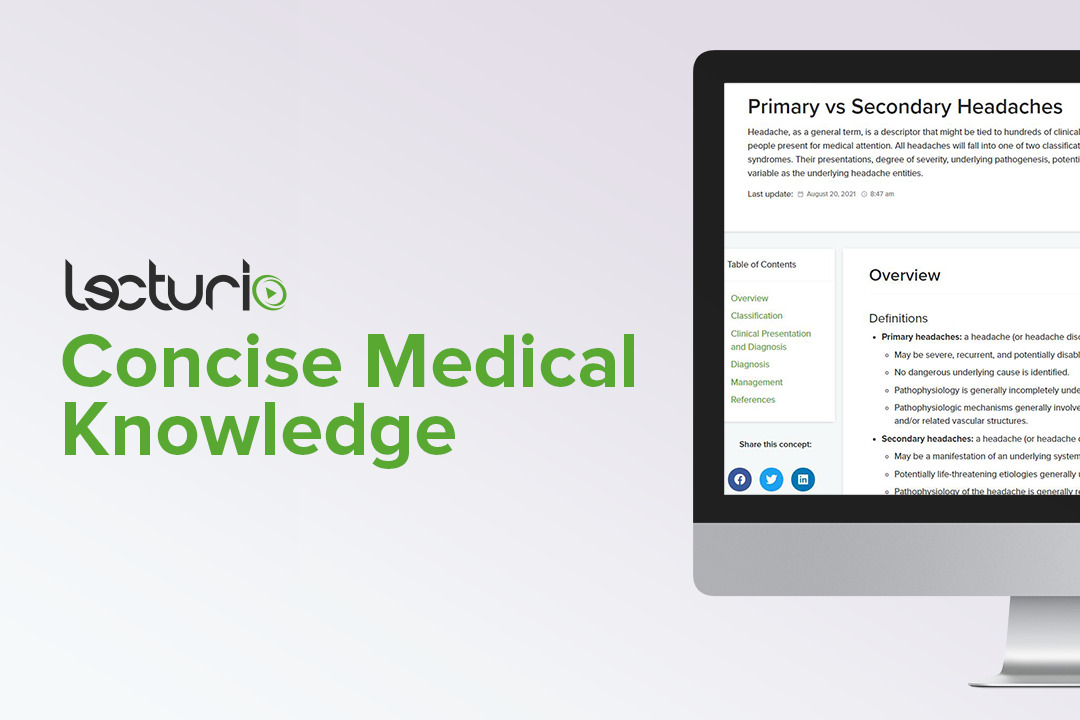Playlist
Show Playlist
Hide Playlist
Case: 67-year-old Woman with History of Migraines
-
Slides Headaches Headache with Visual Disturbance.pdf
-
Download Lecture Overview
00:01 In this lecture we'll talk about headaches that present with prominent visual disturbance. 00:06 Let's start with a case. 00:08 This is a 67-year-old woman who has a history of migraines until menopause. 00:14 She now presents with two months of new chronic daily headache as well as tenderness in the scalp and shoulder aching, and a 15-pound weight loss. 00:24 Yesterday she has an episode where she was completely unable to see from her right eye, in other words, transient monocular vision loss. 00:32 Her exam is now normal. What type of headache syndrome is this? Well, there's a number of key features that we're seeing here that we should associate with this headache syndrome. 00:44 This patient has scalp tenderness, myalgias, and weight loss. 00:47 This makes us concerned about some underlying inflammatory or other underlying condition that may also be presenting with headache would be the root cause of this headache syndrome. 00:59 Importantly, this patient presents with headache with vision dysfunction, and here we have a patient with transient monocular vision loss which points us to think about this category of headache conditions, headache with visual dysfunction. Is this a primary or secondary headache syndrome? Well, headache was a vision dysfunction points us in the direction of secondary headache syndrome and this requires urgent management and evaluation. 01:28 So what's the optimal management and evaluation for this headache? Should we, one, get an immediate CT of the head without contrast or test erythrocyte sedimentation rate and see how C-reactive protein for giant cell arteritis. 01:43 Refer to ophthalmology to evaluate for ocular etiology or perform an MRI of the brain. 01:49 Oh, we have visual disturbances, we might think that referral to ophthalmology is the first step, but that's not the first step for evaluating this patient. 01:57 If this patient does in fact have giant cell arteritis, which I would be concerned about, this requires prompt treatment prior to consideration of temporal artery biopsy, so the first step is to evaluate the giant cell arteritis. 02:11 They are in a clinic or emergency department, and ophthalmologic involvement may be considered urgently within the next several weeks. 02:20 Should we perform an MRI of the brain? That may be needed, but again, not the first step for the evaluation and management of this patient. 02:28 Head CT is important for thunderclap headaches. 02:32 Patients who have possible subarachnoid hemorrhage, an imaging may be needed for this patient but this is not the first and most appropriate step for this patient. 02:42 Testing of erythrocyte sedimentation rate and C=reactive protein is the best first step, and that's the right answer here. 02:49 This is indicated for patients greater than 50 years of age who have a new onset of headache or a change in their typical headache pattern and vision loss. 02:58 So that's what we would do for this patient.
About the Lecture
The lecture Case: 67-year-old Woman with History of Migraines by Roy Strowd, MD is from the course Headache.
Included Quiz Questions
What is the most appropriate FIRST diagnostic test in a patient with suspected giant cell arteritis?
- Lab testing
- CT brain
- MRI
- Lumbar puncture
- Temporal artery biopsy
Customer reviews
5,0 of 5 stars
| 5 Stars |
|
5 |
| 4 Stars |
|
0 |
| 3 Stars |
|
0 |
| 2 Stars |
|
0 |
| 1 Star |
|
0 |




